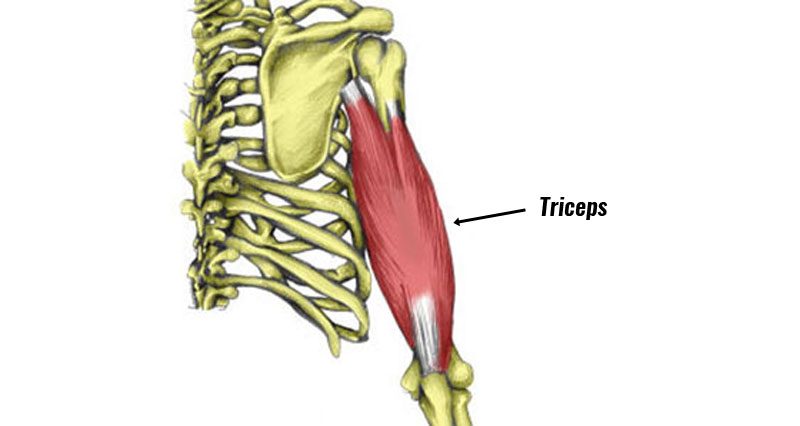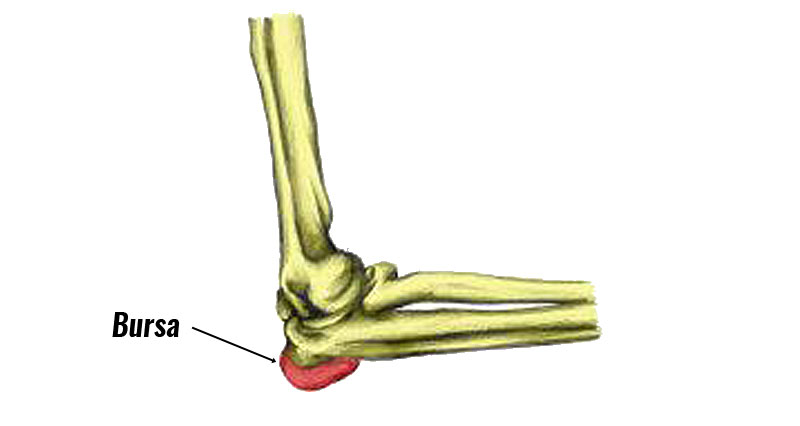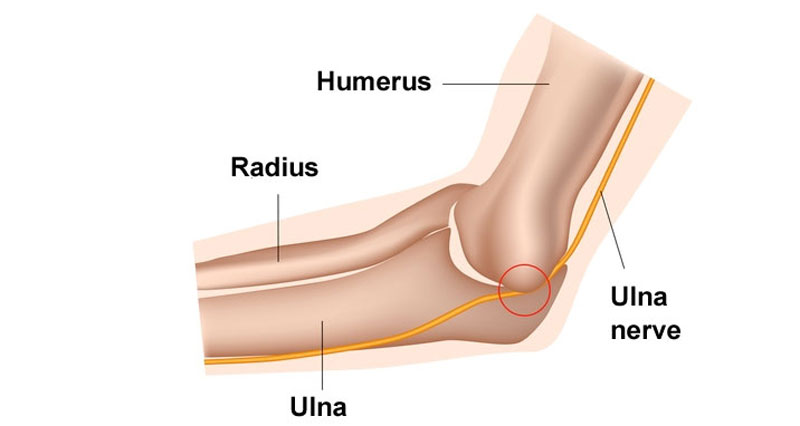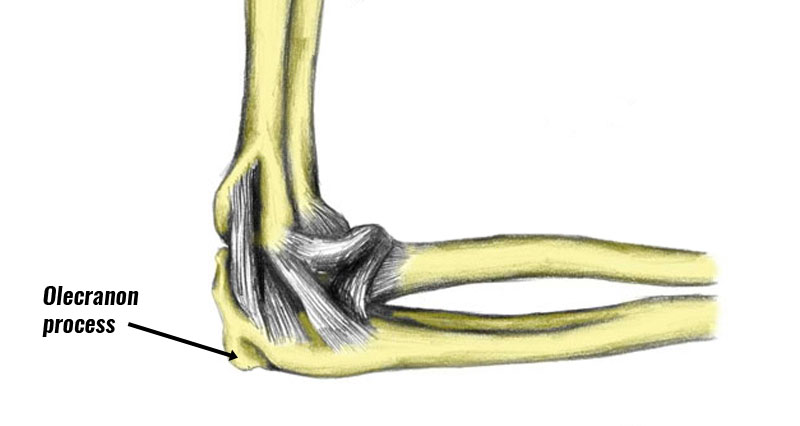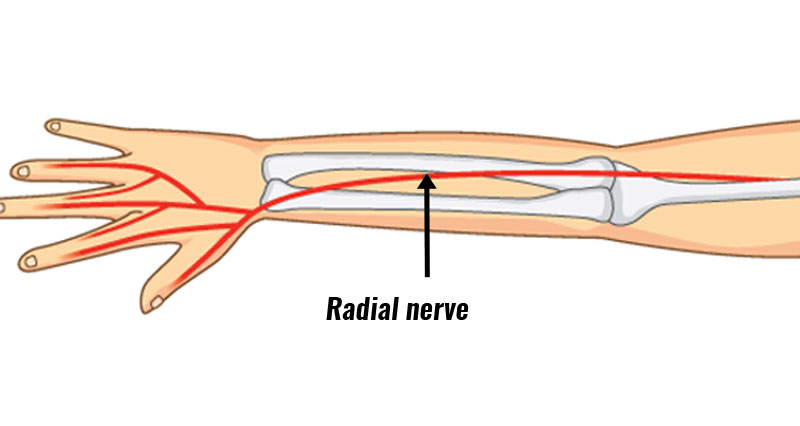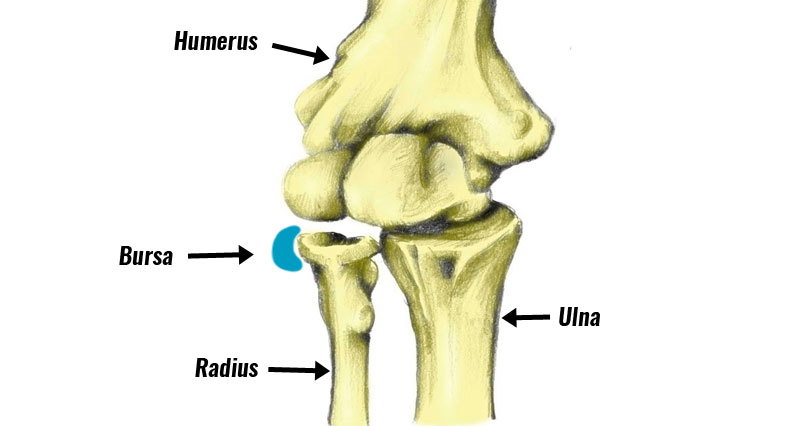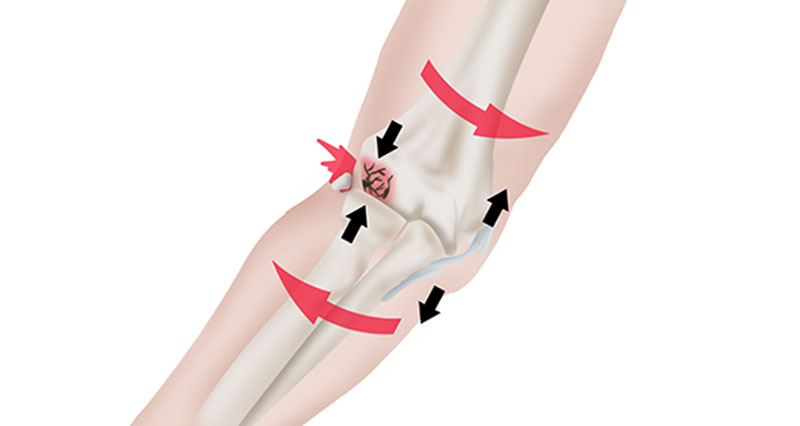Triceps tendonitis (tendinopathy) is an overuse injury, resulting in inflammation (or degeneration) of the triceps tendon where it inserts into the back of the elbow.
Symptoms
Symptoms of Triceps tendonitis include:
- Pain at the back of your elbow develops gradually over time.
- You may feel symptoms both at rest and during exercise.
- The back of your elbow will be tender to the touch.
- You may have limited mobility and reduced strength.
- Stretching the tricep muscles may also cause pain or discomfort.
Assessment tests
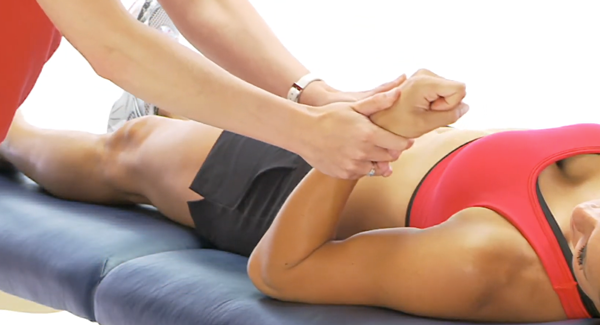
Resisted flexion is one test which stresses the triceps muscle. This means straightening your elbow against resistance, for example when performing a press-up exercise. The test is positive if this is painful.
In more severe cases simply trying to straighten your arm against resistance from a partner or therapist may be painful.
Imaging
Your doctor or physio may X-ray your elbow to rule out an avulsion fracture. This occurs when your tendon tears, pulling a small piece of bone away with it.
What is triceps tendonitis?
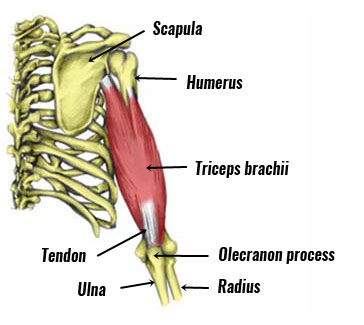
The triceps muscle or triceps brachii to use its full name originates at the back of the shoulder and inserts into the back of the elbow at the Olecranon process. The Olecranon process is the prominent bony protrusion on the Ulna bone.
Tendonitis or tendinopathy?
The term tendonitis refers to acute inflammation of the tendon (triceps tendon inflammation). Inflammation occurs in the first few days following injury as part of the natural healing process.
However, more long-term injuries are more likely to have passed the ‘inflammation’ stage and the term tendinopathy is probably more accurate.
This is because degeneration of the tendon is more likely rather than the presence of acute inflammation. The term ‘tendinopathy’ more accurately describes this.
What causes triceps tendonitis?
Injury to the triceps tendon can occur from a sudden impact or fall causing a strain (tear) of the tendon. Or pain can develop gradually over time through repetitive strain.
Overuse/poor technique
For example, when performing overhead triceps extension strengthening exercises in the gym with a weight that is too heavy.
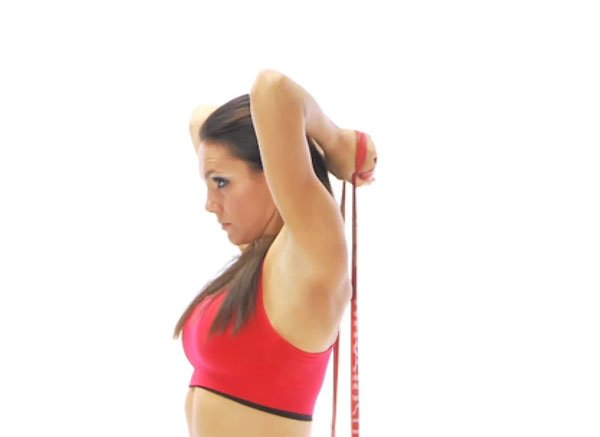
Or allowing your elbow to go past 90 degrees of bend. This increases the forces through the muscle (because of the lever system created at the elbow joint).
Previous injury
Sometimes a triceps tendon strain can occur which is not noticed at the time of injury. It is only afterwards or the following day that pain and stiffness are noticed.
Failure to treat a tendon strain properly could lead to a long-term chronic injury which is more difficult to treat.
Treatment for triceps tendinopathy
The aim of treatment and rehabilitation is to reduce pain and inflammation, and then gradually increase the load you can put through your tendon.
Rest & cold therapy
Rest and apply ice or cold therapy to the injury in the first two days to reduce pain and inflammation.
Continue to rest until normal daily activities are pain-free.
Ice can be applied for 10 minutes every hour initially reducing frequency to two or three times a day as symptoms allow.
Do not apply ice directly to the skin as it may cause ice burns. Wrap the ice in a wet tea towel or use a commercially available cold therapy wrap.
Heat
Later in the healing process, after the acute stage has passed, applying heat and wearing a heat retainer is likely to be more beneficial.
Electrotherapy
A professional therapist may use ultrasound or laser treatment to help reduce pain and inflammation.
Medication
A doctor may prescribe anti-inflammatory medication such as ibuprofen, which may be effective in the short term for acute inflammation, however, it is likely to be less effective over the longer term with more chronic injuries.
Sports massage may also help the scar tissue heal in a more desirable way.
Exercises for triceps tendinopathy
Both stretching and strengthening exercises are important for recovering from Triceps tendonitis.
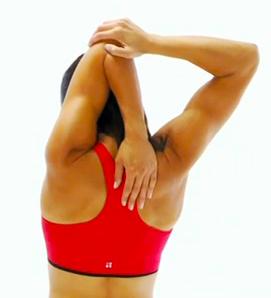
Triceps stretch
This is the most important exercise you can do and should be done 2 to 3 times per day.
- Bend the arm above the head and use the free arm to pull down increasing the stretch on the triceps muscle
- Hold the stretch for 10 to 15 seconds then relax, repeat three times and aim to stretch every few hours throughout the day
Tricep Extension
The aim of strengthening exercises is to gradually increase the load through the tendon to a point where normal training can resume.
Because this is an overuse injury it is better to air on the side of caution and start at a very low level with strengthening exercises.

If exercises are painful either during, after, or the following day then take a step back and rest for a while before building up slowly again.
- The athlete positions the resistance band under the feet leaving an equal length of band for each hand.
- Straighten both arms above the head
- Keeping the elbows pointed upward, the forearms are lowered until a stretch in the tricep is felt. Arms are then straightened again
- Be careful taking the elbow further than 90 degrees particularly in the early stages as this significantly increases the forces through the tendon
Tricep dip
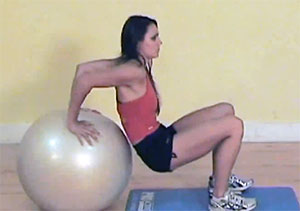
A tricep dip is a common exercise. Adding a Swiss ball makes it more challenging for both the arms and the core muscles.
- The athlete positions themselves with their back to the ball, knees bent and feet on the floor with the hands on the ball, fingers pointing towards their back as shown
- The elbows are then bent, to lower the bottom towards the floor. The athlete then pushes back up before repeating
